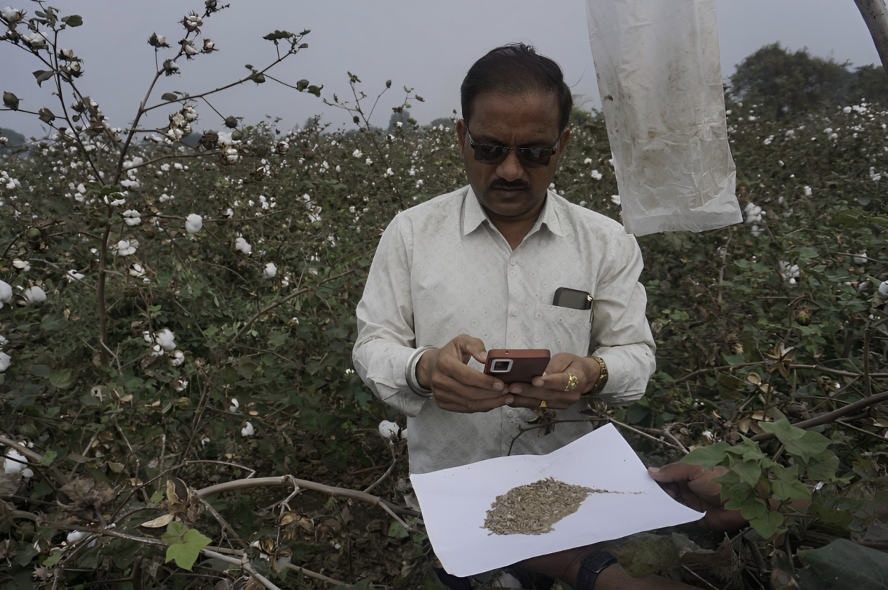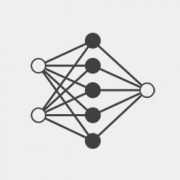The CottonAce solution guides smallholder cotton farmers on the optimal time to take preventive action and protect their farm against avoidable crop losses due to pests such as the Pink and American bollworm.

Nearly 100 million farmers rely on cotton farming for their livelihood. 90% of these are small-scale producers (less than an acre of land) from low and middle income countries. India grows 26% of the world’s cotton – and along with having the largest area under cotton cultivation (41%) it is the world’s largest cotton producer. Many factors can adversely impact productivity of crops, such as plant diseases, weeds and severe weather changes. Cotton is particularly vulnerable to pests. Farmers struggle with uncertainty in yield and income, and are often driven to indebtedness and despair.
Bollworms are estimated to cause 70% of all pest damage. The Pink Bollworm (PBW) is considered the most damaging pest for cotton crops as it has recently developed a resistance to Bt-cotton.
India has an estimated 5.8 million cotton farmers, with 40-50 million people engaged in related activities such as cotton processing and trade. More than 75% of these farmers are smallholders or landless farmers, who lack the resources to adopt sophisticated pest management measures. Up to 30% of crops are lost every year due to pests, despite farmers using over 50% of all pesticide in the country (followed by paddy and wheat). Cotton yield in India is 487 kg/ha, which is significantly lower than the world average of 768 kg/ha.
Existing approaches to counter pest attacks have several limitations, since they require manual data collection (physical counting of pests found in farms), analysis, and advisory dissemination, they tend to be error-prone, unverifiable and difficult to scale. Given the short timespan in which action must be taken when controlling PBW infestations, any delay can render measures ineffective. There is also a lack of awareness among farmers about which chemicals work for specific pests and frequency of spraying. This has resulted in indiscriminate pesticide use, which fails to protect crops and is both damaging to the environment and farmers’ health.

© 2025 Wadhwani AI
ROLES AND RESPONSIBILITIES
An ML Engineer at Wadhwani AI will be responsible for building robust machine learning solutions to problems of societal importance; usually under the guidance of senior ML scientists, and in collaboration with dedicated software engineers. To our partners, a Wadhwani AI solution is generally a decision making tool that requires some piece of data to engage. It will be your responsibility to ensure that the information provided using that piece of data is sound. This not only requires robust learned models, but pipelines over which those models can be built, tweaked, tested, and monitored. The following subsections provide details from the perspective of solution design:
Early stage of proof of concept (PoC)
Late PoC
This is early to mid-stage of AI product development
Post PoC
Responsibilities during production deployment
We realize this list is broad and extensive. While the ideal candidate has some exposure to each of these topics, we also envision great candidates being experts at some subset. If either of those cases happens to be you, please apply.
DESIRED QUALIFICATIONS
Master’s degree or above in a STEM field. Several years of experience getting their hands dirty applying their craft.
Programming

ROLES AND RESPONSIBILITIES
As an ML Scientist at Wadhwani AI, you will be responsible for building robust machine learning solutions to problems of societal importance, usually under the guidance of senior ML scientists. You will participate in translating a problem in the social sector to a well-defined AI problem, in the development and execution of algorithms and solutions to the problem, in the successful and scaled deployment of the AI solution, and in defining appropriate metrics to evaluate the effectiveness of the deployed solution.
In order to apply machine learning for social good, you will need to understand user challenges and their context, curate and transform data, train and validate models, run simulations, and broadly derive insights from data. In doing so, you will work in cross-functional teams spanning ML modeling, engineering, product, and domain experts. You will also interface with social sector organizations as appropriate.
REQUIREMENTS
Associate ML scientists will have a strong academic background in a quantitative field (see below) at the Bachelor’s or Master’s level, with project experience in applied machine learning. They will possess demonstrable skills in coding, data mining and analysis, and building and implementing ML or statistical models. Where needed, they will have to learn and adapt to the requirements imposed by real-life, scaled deployments.
Candidates should have excellent communication skills and a willingness to adapt to the challenges of doing applied work for social good.
DESIRED QUALIFICATIONS
